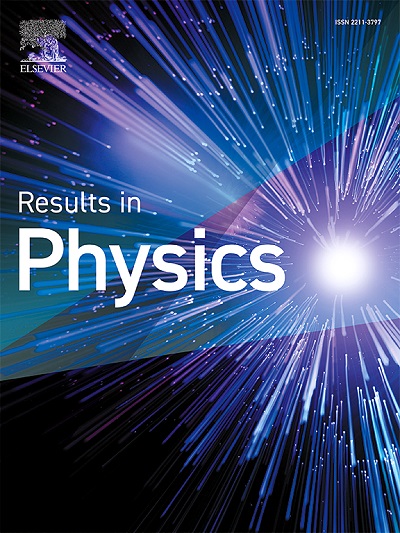Influence of tool rotational speed on microstructure, mechanical strength, and wear behavior of AA7075 matrix composites via deformation-driven metallurgy
IF 4.6
2区 物理与天体物理
Q2 MATERIALS SCIENCE, MULTIDISCIPLINARY
引用次数: 0
Abstract
The pursuit of high-performance aluminum matrix composites (AMCs) for advanced engineering applications has driven interest in novel fabrication techniques. This study explores the deformation-driven metallurgy (DDM) method for producing AA7075-Al2O3 composites, shedding light on how tool rotational speed influences their microstructure, mechanical properties, and wear resistance. Unlike conventional melt-based methods, DDM leverages severe plastic deformation to achieve unique material characteristics. A standout finding of this research is the exceptional uniformity and refinement of Al2O3 particles (7.3 ± 1.3 µm) achieved at 800 rpm, along with a remarkable ultimate tensile strength of 613.3 ± 12.1 MPa—significantly surpassing prior reports for similar composites. Interestingly, while increasing rotational speed to 1400 rpm resulted in grain coarsening from 5.4 ± 0.9 µm to 19.1 ± 0.4 µm, the process maintained a random texture across all samples. The composite fabricated at 800 rpm also exhibited superior hardness (202.05 ± 3.32 HV0.1) and the lowest wear rate (4.8 ± 0.2 µg/m), making it a promising candidate for applications requiring high strength and wear resistance. This study not only demonstrates the effectiveness of DDM in producing high-performance composites but also highlights the critical role of process parameters in tailoring material properties, offering insights distinct from traditional fabrication approaches.
变形驱动冶金工艺下刀具转速对AA7075基复合材料显微组织、机械强度和磨损性能的影响
高性能铝基复合材料(amc)的先进工程应用的追求已经推动了新的制造技术的兴趣。本研究探索了变形驱动冶金(DDM)方法生产AA7075-Al2O3复合材料,揭示了刀具转速如何影响其微观结构、力学性能和耐磨性。与传统的基于熔体的方法不同,DDM利用严重的塑性变形来实现独特的材料特性。这项研究的一个突出发现是,在800转/分的转速下,Al2O3颗粒的均匀性和细化度达到了7.3±1.3µm,同时其极限抗拉强度达到了613.3±12.1 mpa,大大超过了之前类似复合材料的报道。有趣的是,当转速增加到1400 rpm时,晶粒从5.4±0.9µm粗化到19.1±0.4µm,但该过程在所有样品中保持随机纹理。在800 rpm下制备的复合材料还具有优异的硬度(202.05±3.32 HV0.1)和最低的磨损率(4.8±0.2µg/m),使其成为要求高强度和耐磨性的应用的有希望的候选者。这项研究不仅证明了DDM在生产高性能复合材料方面的有效性,而且强调了工艺参数在定制材料性能方面的关键作用,提供了与传统制造方法不同的见解。
本文章由计算机程序翻译,如有差异,请以英文原文为准。
求助全文
约1分钟内获得全文
求助全文
来源期刊

Results in Physics
MATERIALS SCIENCE, MULTIDISCIPLINARYPHYSIC-PHYSICS, MULTIDISCIPLINARY
CiteScore
8.70
自引率
9.40%
发文量
754
审稿时长
50 days
期刊介绍:
Results in Physics is an open access journal offering authors the opportunity to publish in all fundamental and interdisciplinary areas of physics, materials science, and applied physics. Papers of a theoretical, computational, and experimental nature are all welcome. Results in Physics accepts papers that are scientifically sound, technically correct and provide valuable new knowledge to the physics community. Topics such as three-dimensional flow and magnetohydrodynamics are not within the scope of Results in Physics.
Results in Physics welcomes three types of papers:
1. Full research papers
2. Microarticles: very short papers, no longer than two pages. They may consist of a single, but well-described piece of information, such as:
- Data and/or a plot plus a description
- Description of a new method or instrumentation
- Negative results
- Concept or design study
3. Letters to the Editor: Letters discussing a recent article published in Results in Physics are welcome. These are objective, constructive, or educational critiques of papers published in Results in Physics. Accepted letters will be sent to the author of the original paper for a response. Each letter and response is published together. Letters should be received within 8 weeks of the article''s publication. They should not exceed 750 words of text and 10 references.
 求助内容:
求助内容: 应助结果提醒方式:
应助结果提醒方式:


